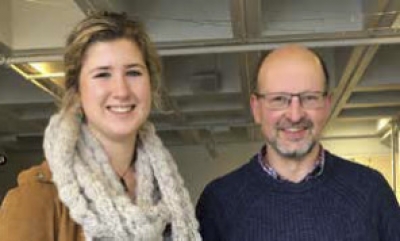Victoria University student Shannon Bentley is the recipient of DU’s first Wetland Care scholarship.
Shannon, who is from Upper Hutt and Carterton, has a bachelor of science degree and is now studying for a master’s in ecology.
She is looking at facilitating effective wetland restoration in the Wetlands for People and Place research group.
“This project looks at wetland restoration in the Ruamahanga catchment, and my role in the project (in part) is to find the ecosystem services gained from wetland restoration,” she says.
“This project has been an amazing opportunity to contribute to the Wairarapa’s environment and clean up the Ruamahanga River.
“In the Wairarapa, farmers have been undergoing wetland restoration on private property. Farmers have used different restoration techniques to re-establish a wetland ecosystem,” she says.
“Wetlands produce services such as water purification, flood abatement, carbon storage, and species habitat.
“My master’s research asks how restoration, species diversity and ecosystem services interact.
“Specifically, I will ask how does restoration affect the biodiversity of plants and soil microbes? And how do biodiversity and restoration treatments affect the ecosystem services?
“With this information, I hope to be able to advise which wetland restoration techniques are effective at restoring ecosystem services.”
Her goal is to quantify the gain in nutrient retention, flood abatement, carbon storage, and plant and microbe diversity in 18 restored wetlands of differing ages in comparison to 18 unrestored wetlands.
“By measuring how wetlands are functioning (via ecosystem services) after they have been restored, and looking at what restoration treatments are effective, this project will be able to determine how effective our current restoration efforts are,
and which restoration techniques are working.”
DU Director Jim Law says, of Shannon: “She is exactly the kind of person that our scholarships are directed at. She is a bright, passionate young Kiwi.” Shannon’s supervisors are Dr Julie Deslippe, assistant director of the Centre of Biodiversity and Restoration Ecology at Victoria, Dr Stephanie Tomscha, head of the Wetlands
for People and Place project and a postdoctoral research fellow at Victoria, and Ra Smith.
Ra Smith is an environmental iwi liaison for Shannon’s iwi, Ngāti Kahungunu, and a whanaunga (relative). He is involved in the effort to clean up Lake Wairarapa.
